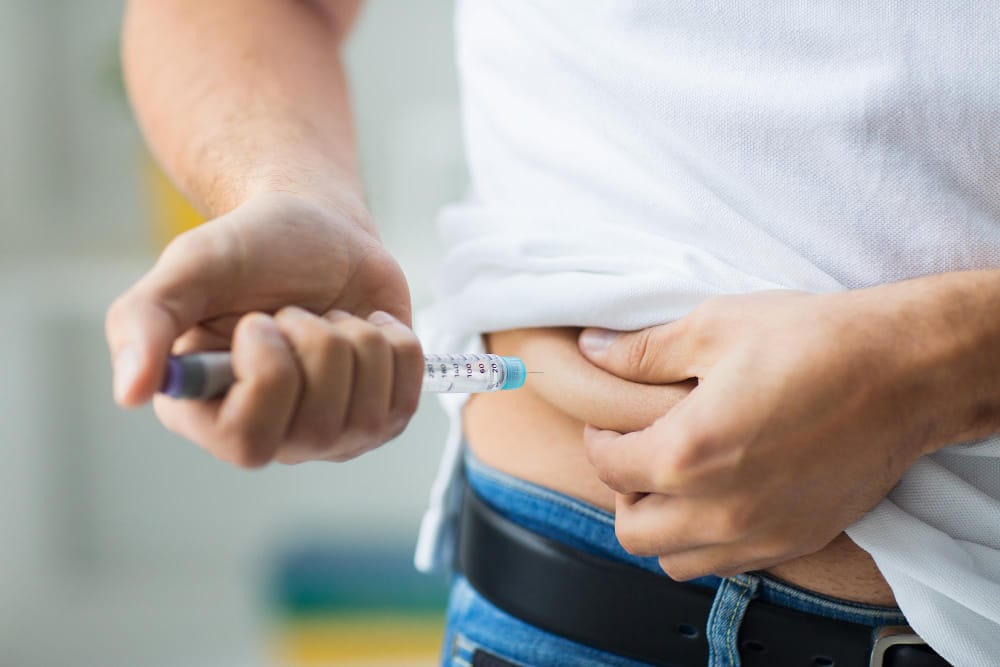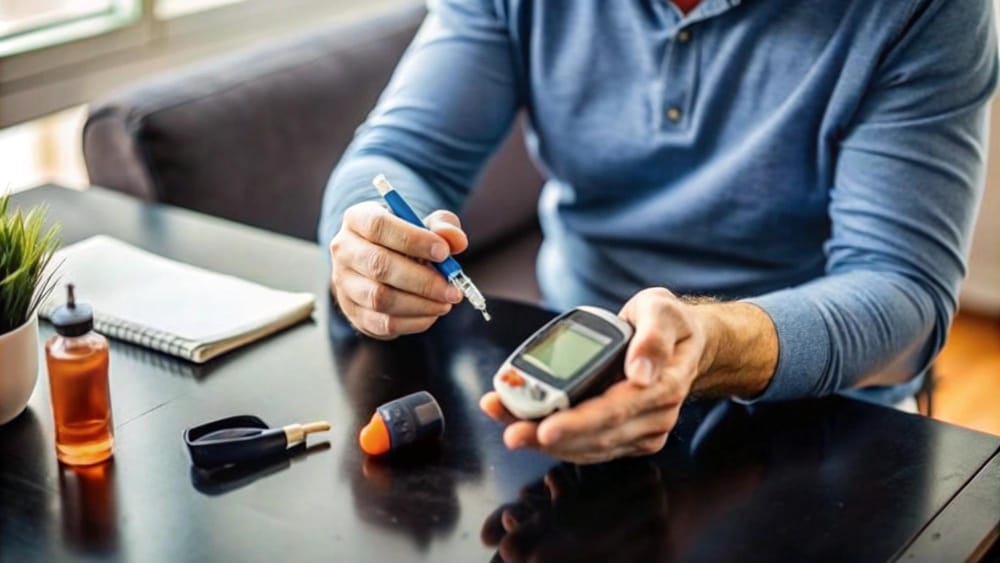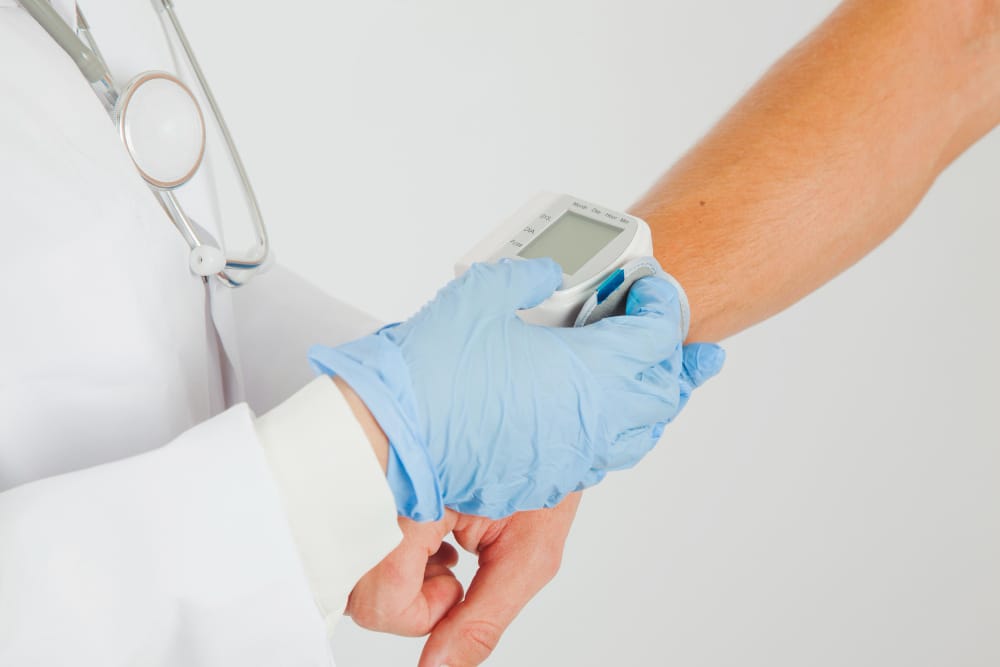How Smoking and Nicotine Cause Diabetes: The Hidden Connection You Need to Know


Written By: Aman Doda
Last Updated: 05/02/2025


- The scientific link between smoking and sexual dysfunction.
- How nicotine and carbon monoxide restrict blood flow, reducing arousal and performance.
- The connection between smoking and erectile dysfunction (ED).
- The impact of smoking on testosterone, libido, and fertility.
- How quitting smoking can reverse damage and restore sexual health.
- Practical steps to recover faster and improve intimacy.
- 01: Introduction: The Overlooked Link Between Smoking and Diabetes
- 02: How Smoking Causes Diabetes – Breaking Down the Science
- 03: Nicotine and Insulin Resistance – The Silent Trigger
- 04: Smoking and Type 2 Diabetes – Increased Risk and Complications
- 05: How Quitting Smoking Improves Blood Sugar Control
- 06: Watch Mehul’s Transformation
- 07: FAQs – Answering the Biggest Questions About Smoking and Diabetes
- 08: Conclusion: Take Back Control of Your Health & Intimacy
- 09: Disclaimer
The Overlooked Link Between Smoking and Diabetes
Most people associate smoking with lung disease, heart problems, or cancer, but very few realize that smoking is one of the leading causes of diabetes.
Nicotine and other harmful chemicals in cigarettes increase blood sugar levels, cause insulin resistance, and damage the pancreas—directly increasing the risk of Type 2 diabetes and worsening complications for those already diagnosed.
Why This Matters More Than You Think
- Smokers are 30–40% more likely to develop diabetes than non-smokers.
- Smoking makes diabetes harder to control, increasing the risk of severe complications like nerve damage, kidney failure, and vision loss.
- Even nicotine replacements (such as vaping or nicotine patches) can negatively impact blood sugar levels.
The good news? Quitting smoking can reverse many of these effects, stabilize blood sugar, and reduce diabetes complications.
In this blog, we’ll break down the scientific connection between smoking and diabetes, explain how it affects both Type 1 and Type 2 diabetes, and show you how quitting can help you regain control over your health.
To learn more about how smoking affects overall health, read How Smoking Destroys Your Physical Health.
How Smoking Causes Diabetes – Breaking Down the Science
Most people think diabetes is only caused by eating too much sugar. But the truth is, smoking is one of the biggest hidden causes of diabetes—and it makes managing blood sugar far more difficult for those who already have it.
Cigarettes don’t just harm your lungs. The chemicals in tobacco and nicotine attack your body’s ability to control blood sugar, making diabetes more likely, more dangerous, and harder to manage.
How Smoking Leads to Diabetes
1. Smoking Makes Your Body Reject Insulin
Insulin is a hormone that works like a key—it unlocks your cells so they can absorb sugar (glucose) from your blood and use it for energy. But smoking blocks this key, making it harder for insulin to do its job.
- When insulin doesn’t work properly, sugar stays in the bloodstream instead of getting into cells.
- This leads to high blood sugar levels, a major cause of diabetes.
- Over time, the body produces more and more insulin to try to fix the problem, but this wears out the pancreas and pushes you toward Type 2 diabetes.
📌Studies show that smokers have 30–40% more insulin resistance than non-smokers, making them much more likely to develop diabetes.
2. Smoking Causes Inflammation That Damages the Pancreas
Your pancreas is the organ that produces insulin. But when you smoke, it creates constant inflammation inside the body, which:
- Damages pancreatic cells, making it harder for them to produce insulin.
- Increases belly fat, which makes diabetes worse.
- Raises the risk of organ damage, making diabetes complications more severe.
📌Long-term smokers have a higher risk of pancreatic disease, which directly impacts blood sugar control.
3. Smoking Increases Stress Hormones That Raise Blood Sugar
When you smoke, your body releases stress hormones like cortisol. Cortisol forces the liver to dump extra sugar into the bloodstream, even if you haven’t eaten anything.
This means:
- Smokers often have high blood sugar levels even on an empty stomach.
- Quitting smoking helps lower blood sugar naturally.
📌Smokers with diabetes often need higher doses of medication to control their blood sugar compared to non-smokers.
4. Even “Safer” Nicotine Products Can Worsen Diabetes
Many people switch to vaping, nicotine patches, or chewing tobacco, thinking they are healthier than smoking. But research shows that nicotine itself is a major problem for blood sugar control.
Nicotine:
- Still causes insulin resistance
- Still raises blood sugar levels
- Still increases cravings for high-carb foods
📌A study found that nicotine patches and vaping increase insulin resistance, just like smoking.
To understand how smoking affects other areas of health, read The Ripple Effect of Smoking on Your Personality and Self-Confidence.


Nicotine and Insulin Resistance – The Silent Trigger
Many people believe smoking is only harmful because of tar and chemicals in cigarettes. But the real danger for diabetes comes from nicotine itself—even in so-called “safer” alternatives like vapes, nicotine patches, or chewing tobacco.
Nicotine silently damages your body’s ability to process sugar, leading to insulin resistance, a major driver of Type 2 diabetes.
How Nicotine Triggers Insulin Resistance
- Nicotine Blocks Insulin from Doing Its Job
Insulin is like a key that unlocks your cells, allowing sugar (glucose) from your bloodstream to enter and be used for energy. But nicotine blocks this key, making it harder for insulin to work.
- When insulin cannot do its job properly, sugar stays in the bloodstream.
- This leads to high blood sugar, which puts extra pressure on the pancreas to produce even more insulin.
- Over time, this leads to insulin resistance, meaning your body stops responding to insulin the way it should.
📌Studies show that nicotine increases insulin resistance by up to 30%, even in people who don’t smoke cigarettes.


- Nicotine Increases the Release of Stored Sugar from the Liver
When your body senses stress, it releases extra sugar from the liver into the bloodstream to give you energy. Nicotine tricks the body into thinking it’s under stress—even when there is no real danger.
- This constant release of extra sugar causes blood sugar spikes.
- Over time, the body loses control over glucose regulation, making diabetes more likely.
📌Smokers and nicotine users often have higher fasting blood sugar levels than non-smokers, even when they haven’t eaten.
- Nicotine Increases Belly Fat—A Major Diabetes Risk Factor
Nicotine raises cortisol levels (the body’s stress hormone), which leads to:
- More fat storage, especially around the belly
- Higher inflammation, which worsens insulin resistance
- Greater risk of developing Type 2 diabetes
📌People who smoke or use nicotine products tend to store more fat around their stomach, a key risk factor for diabetes.
Why Quitting Nicotine Helps Reverse Insulin Resistance
The moment you quit nicotine, your body starts healing immediately:
- Within hours: Blood circulation improves, helping insulin work better.
- Within days: Blood sugar levels become more stable.
- Within weeks: Insulin sensitivity increases, reducing diabetes risk.
📌Studies show that ex-smokers regain better insulin function within just a few weeks of quitting.
Still struggling to quit?
Our free ebook reveals the surprising mental root cause of smoking addiction—and how to overcome it. Download it here to take the first step.
Want to learn how quitting smoking improves overall energy and motivation? Read How Quitting Smoking Boosts Energy, Productivity & Motivation.
Smoking and Type 2 Diabetes – Increased Risk and Complications
If you smoke, your risk of developing Type 2 diabetes is 30–40% higher than non-smokers. But the damage doesn’t stop there. Smoking also makes diabetes harder to control and significantly increases the risk of severe complications.
Let’s break down why smoking and diabetes are a deadly combination and why quitting can add years to your life.
How Smoking Increases the Risk of Type 2 Diabetes
1. Smoking Worsens Insulin Resistance
Type 2 diabetes develops when your body stops responding properly to insulin—a condition called insulin resistance.
- Nicotine and toxic chemicals in cigarettes block insulin from working properly.
- Your body produces more and more insulin, but sugar stays in the bloodstream.
- Over time, this leads to high blood sugar levels, pushing you toward diabetes.
📌A study published in Diabetes Care found that smokers have significantly higher insulin resistance, even if they eat the same diet as non-smokers.
2. Smoking Increases Belly Fat and Weight Gain
Many smokers think smoking helps control weight, but the opposite is true—smoking increases belly fat, one of the biggest risk factors for diabetes.
- Nicotine triggers cortisol (stress hormone), which promotes fat storage around the stomach.
- Smokers often develop an “apple-shaped” body, increasing their risk of Type 2 diabetes.
📌Smokers with diabetes tend to carry more belly fat, even if they have a normal body weight.


How Smoking Makes Diabetes More Dangerous
If you already have Type 2 diabetes, smoking makes it much harder to manage and leads to serious health risks.
1. Smoking Increases the Risk of Heart Disease and Stroke
People with diabetes already have a higher risk of heart disease, but smoking doubles that risk.
- Smoking damages blood vessels, making it easier for fat deposits to build up and block blood flow.
- This can lead to heart attacks, strokes, and circulation problems, especially in diabetics.
📌Smokers with diabetes are twice as likely to die from heart disease compared to non-smokers with diabetes.
2. Smoking Increases the Risk of Nerve Damage (Neuropathy)
Diabetes already damages nerves, but smoking makes it worse by cutting off oxygen and blood flow to the nerves in your hands, feet, and legs.
- This leads to numbness, pain, and a higher risk of infections.
- Many smokers with diabetes develop severe foot ulcers, which can lead to amputation.
📌More than 80% of foot amputations in diabetics are caused by poor circulation due to smoking.
3. Smoking Increases the Risk of Kidney Damage
Your kidneys filter waste from your blood, but smoking makes it harder for them to do their job.
- Smoking raises blood pressure, which strains the kidneys.
- This can lead to kidney failure, requiring dialysis or a transplant.
📌Smokers with diabetes are twice as likely to develop chronic kidney disease compared to non-smokers.
Why Quitting Smoking Can Save Your Life
The moment you quit smoking, your diabetes risk drops, and complications become easier to manage.
- Within hours: Blood circulation improves, reducing heart strain.
- Within weeks: Blood sugar levels stabilize, making diabetes easier to control.
- Within months: Nerve damage slows, and kidney function improves.
📌Studies show that diabetics who quit smoking cut their risk of heart disease, nerve damage, and kidney failure in half.
Still struggling to quit?
Our Free ebook revels the surprising mental root cause of smoking addiction-How to overcome it. Download it here to take the first step
Want to learn how quitting smoking improves overall energy and motivation? Read How Quitting Smoking Boosts Energy, Productivity & Motivation.
How Quitting Smoking Improves Blood Sugar Control
By now, you know that smoking causes insulin resistance, blood sugar spikes, and worsens diabetes complications. But the moment you quit, your body starts healing—and your blood sugar control improves faster than you think.
Let’s explore how quitting smoking helps your body restore balance, improve insulin function, and lower diabetes risks.
How Your Body Recovers After Quitting Smoking
1. Blood Sugar Becomes More Stable
Smoking makes blood sugar levels swing unpredictably, but after quitting:
✔ Insulin starts working better within just a few days.
✔ Blood sugar levels stabilize, reducing dangerous highs and lows.
✔ HbA1c levels (long-term blood sugar control) improve over time.
📌Research shows that ex-smokers with diabetes experience more stable blood sugar levels within 2–8 weeks of quitting.
👉Read more about how quitting smoking improves blood sugar control in this study published by the American Diabetes Association.
2. Insulin Sensitivity Improves, Making Diabetes Easier to Manage
When you quit smoking, your cells become more responsive to insulin, which means:
✔ You may need lower insulin doses or diabetes medication.
✔ Your body absorbs sugar more efficiently, reducing blood sugar spikes.
✔ Less stress on the pancreas, helping prevent diabetes progression.
📌Studies show that ex-smokers need lower insulin doses compared to smokers with diabetes.
3. Your Heart, Nerves, and Kidneys Start Healing
Diabetes already increases the risk of heart disease, nerve damage, and kidney failure, but quitting smoking helps:
✔ Improve blood circulation, reducing heart attack and stroke risk.
✔ Protect nerves from further damage, lowering the chance of neuropathy.
✔ Reduce kidney stress, lowering the risk of chronic kidney disease.
📌Within just one year of quitting, ex-smokers with diabetes reduce their risk of heart disease by 50%.
Why Quitting Smoking is the Best Investment in Your Health
When you quit smoking, you’re not just improving diabetes control—you’re adding years to your life.
- Better blood sugar stability means fewer diabetes complications.
- Lower medication dependence means easier diabetes management.
- Improved heart and nerve health reduces long-term risks.
📌 A study found that ex-smokers with diabetes live significantly longer than those who continue smoking, with fewer hospital visits and complications.
Want to learn how smoking affects mental health and motivation? Read The Psychological Impact of Smoking – Confidence, Stress & Relationships.


Watch Mehul’s Transformation
Mehul successfully quit smoking, and his 1-year journey is proof that freedom from cigarettes is possible—no matter how long you’ve smoked.
Why Quitting is the Best Decision for Your Health
Quitting smoking doesn’t just help you feel better—it reduces your diabetes risk, stabilizes blood sugar, and protects your organs from long-term damage.
📌 According to a study by the National Institute of Diabetes and Digestive and Kidney Diseases, quitting smoking improves insulin sensitivity and lowers diabetes complications within weeks.
Still struggling to quit?
The biggest challenge most smokers face isn’t the cigarette—it’s the mental dependency on smoking.
🎥 Watch this video to understand the real reason behind smoking addiction and how to break free:
FAQs – Answering the Biggest Questions About Smoking and Diabetes
Yes. Smoking increases insulin resistance, making it harder for your body to process sugar, which can lead to Type 2 diabetes.
While quitting smoking won’t cure diabetes, it improves insulin sensitivity, helps stabilize blood sugar, and reduces complications.
No. Nicotine in vapes still increases insulin resistance and raises blood sugar levels, making diabetes harder to control.
📌 Learn more: Study from the American Diabetes Association
Many ex-smokers see more stable blood sugar levels within 2–8 weeks after quitting.
Yes. Nicotine increases cortisol and triggers the liver to release more sugar into the bloodstream, causing blood sugar spikes.
Smoking damages blood vessels, nerves, and organs, increasing the risk of heart disease, kidney failure, and amputations.
If you follow QSFS, you’ll remove the mental dependency on cigarettes—the real cause of cravings.
Some people eat more after quitting, but weight gain is not automatic. Healthy food choices and staying active can prevent this.
No! Quitting immediately reduces your risk of complications and helps stabilize blood sugar.
📌 Fact: According to this study from the NIDDK, ex-smokers with diabetes see major health improvements within months of quitting.
Join our FREE Masterclass to learn a proven method that makes quitting easy—without willpower struggles.
Watch This : Understanding the root casue of smoking
Conclusion: Reclaim Your Freedom, Joy, and Life
Smoking doesn’t just harm your health—it steals precious moments of joy, fun, and connection that make life worth living. From limiting your ability to participate in recreational activities to creating emotional and social barriers, smoking quietly robs you of the freedom to fully enjoy life. But here’s the good news: you have the power to take it all back.
Quitting smoking isn’t just about putting down cigarettes; it’s about reclaiming your identity, your vitality, and your relationships. It’s about saying yes to the things you love—whether it’s dancing at a family wedding, playing with your kids, or hiking to a breathtaking viewpoint without feeling out of breath.
💡 Every moment you spend smoking is a moment you could spend living your best life. What will you choose?
You might feel overwhelmed by the idea of quitting, and that’s completely normal. But remember: you don’t have to do it alone. Thousands of people, just like you, have transformed their lives with the right guidance and support. You can be next.
Understanding the Root Cause and Breaking Free from Smoking
By now, you understand how smoking impacts your sexual health, confidence, and overall well-being. But quitting is not just about willpower or temporary fixes—it’s about addressing the real root cause of why you smoke.
Most people struggle to quit because they focus only on the physical habit, without realizing that the real problem is mental dependency. Until you break free from this false association with cigarettes, cravings will keep pulling you back.
So, how do you truly quit smoking for good—without stress, struggle, or relapse?
Conclusion
If you have diabetes or are at risk, quitting smoking is one of the most powerful steps you can take to protect your health.
Let’s recap what we’ve learned:
✅ Smoking directly increases insulin resistance, making diabetes harder to control.
✅ It raises blood sugar levels, damages nerves, and increases the risk of heart disease, kidney failure, and amputations.
✅ Quitting smoking can help stabilize blood sugar, improve insulin function, and reduce diabetes complications.
✅ Even nicotine alternatives like vaping and patches still harm blood sugar control.
✅ The sooner you quit, the faster your body starts healing.
The choice is simple: continue risking your health or take control and break free today.
Join our FREE Masterclass and learn how thousands of people have quit smoking without cravings, stress, or weight gain—all by using a proven, science-backed method.
Want to see how quitting smoking improves blood sugar control? Read this research from the National Institute of Diabetes and Digestive and Kidney Diseases.
Missed any section? Go back and read “How Smoking Causes Diabetes – Breaking Down the Science.“
Disclaimer
I am a health and wellness coach with expertise in nicotine addiction, but I am not a diabetologist or medical professional. The information in this blog is for educational purposes only and should not be considered medical advice. Always consult a qualified healthcare provider before making any changes to your diabetes management or overall health plan.
Share via:
